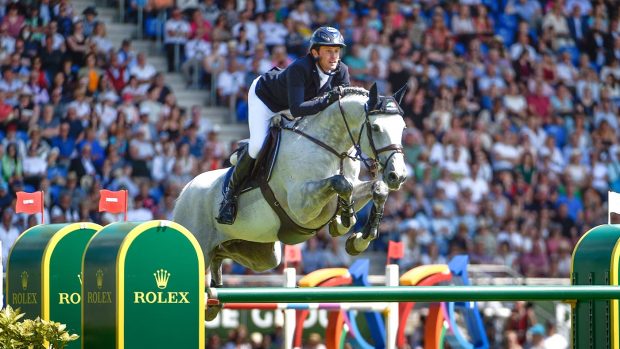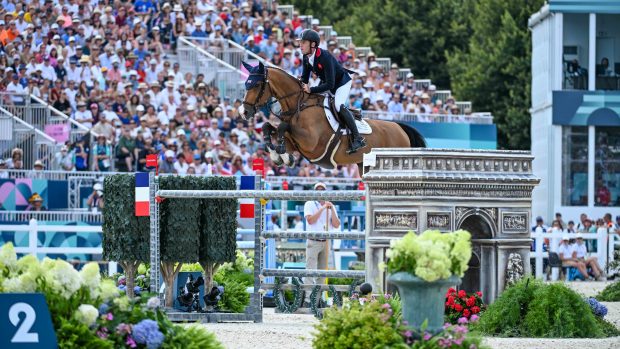From 12.45pm (BST) today (2 August), the individual medals in the Olympic eventing showjumping phase at the Tokyo Games will be decided. It will be a nail-biting competition, with Germany’s Julia Krajewski holding individual gold medal position and Britain’s Oliver Townend and Tom McEwen in silver and bronze medal position respectively. Find out when the British riders will ride.
The course designer for the Olympic eventing showjumping today is Santiago Varela from Spain, while the technical delegate is Britain’s Philip Surl.
There are 12 numbers fences in total, and the course includes one treble and one double combination. The course is a total of 490m in length and the time allowed is 79 seconds. Let’s take a virtual walk around the course…
Olympic eventing showjumping course for individual medals
Fence one – Kanto Matsuri, Akita Festival
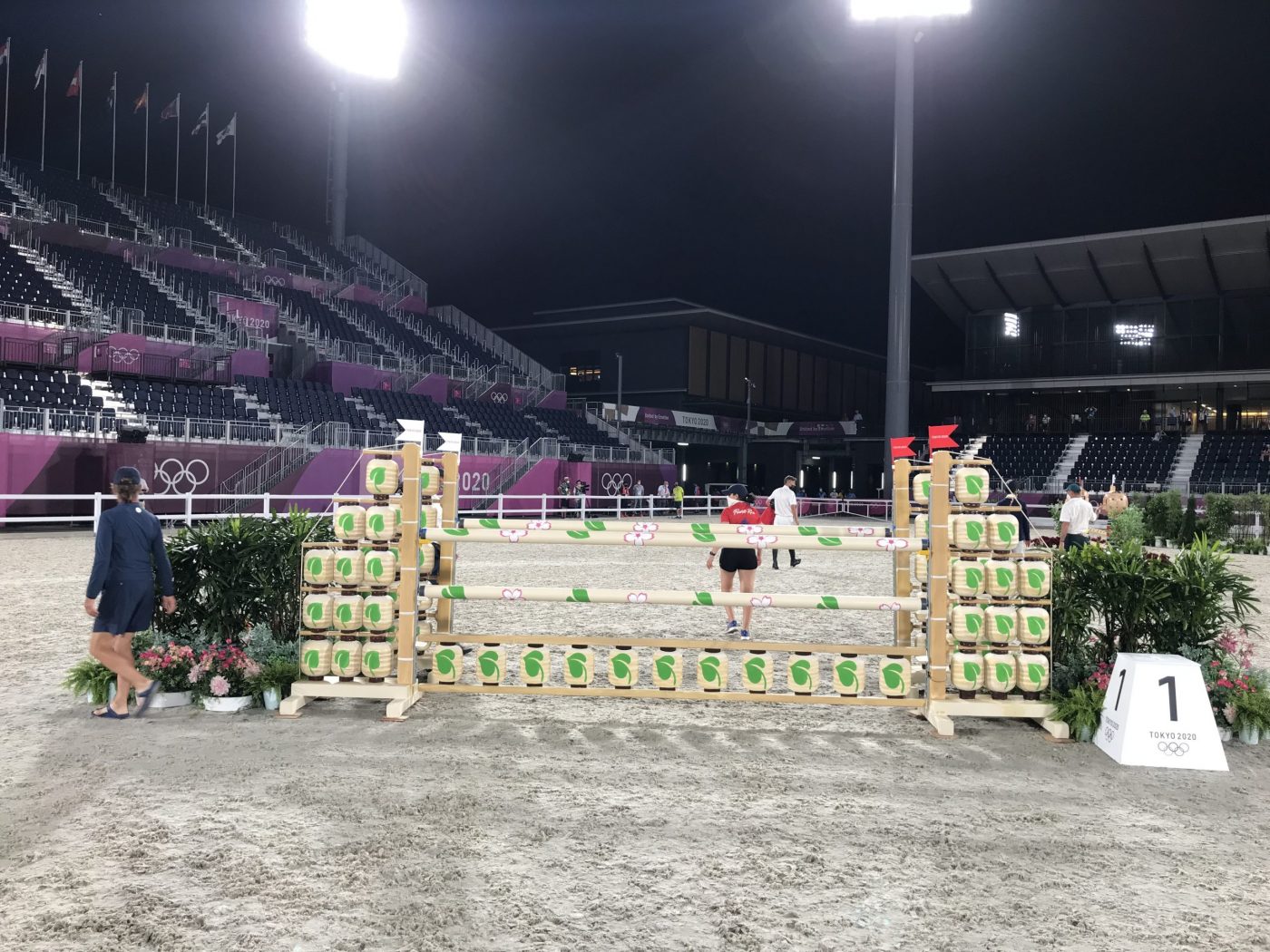
The Kanto Matsuri Akita Festival (竿燈まつり, “pole lantern festival”) is a Tanabata-related celebration in Akita City, held annually from 3-6 August. A feature of the festival is how all the participants are able to keep the kanto (long poles made out of bamboo with a paper lantern on the top) in equilibrium. These poles can reach a length of 12 metres and a weight of around 50kg. They can have up to 46 paper lamps with lit candles inside them. Once the drums, flutes and songs start to sound (“Dokkoisho”, “Dokkoisho”), each kanto is pulled up by only one person, keeping it in equilibrium. Gradually, more extensions are added until the pole reaches its maximum height. The main event of this festival are the night-time parades and there are approximately 250 kantos. This event takes place along Chuo Dori street in Akita.
Fence two – Red thread legend
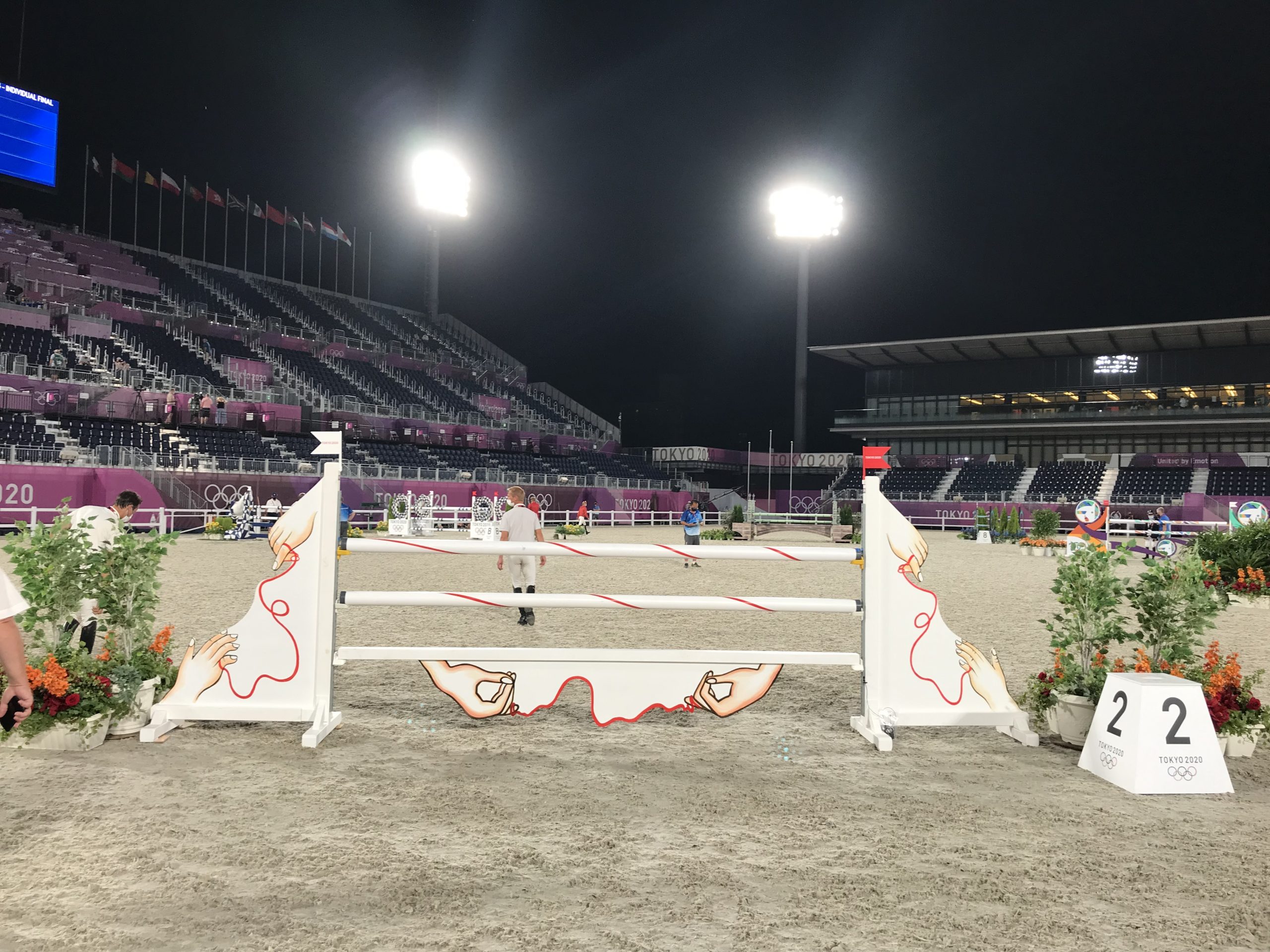
According to this myth, everyone is tied by the little finger with an invisible red thread that will lead them to another person with who they will make history. The two people connected by this thread will have an important history, no matter the place, the time or the circumstances. The red thread can be tangled, collapsed and stretched, as surely often happens, but it can never be broken. The ulnar artery connects the heart to the little finger. This thin vein that goes from the heart to the hand extends through the invisible world to finish its course in someone else’s heart. Unlike other legends, the Japanese is not limited to the couple, or to a single person we are destined to find. It speaks of a sort of arterial ramification that arises from a finger towards all those with whom we will make history and all those we help in one way or another. The red thread myth is a way to understand our relationships with other people as a default plot where all the little stories of which, in one way or another we are part of, and how they are not casual but part of a network of red threads that are there from the beginning. According to this legend, there is an old man who lives on the moon and leaves every night seeking among the spirits those akin to gather on earth, who have something to teach each other, and when he finds them he ties a red thread to find their way. So, our red threads end up in someone else.
Fence three – Japanese Seigaiha Symbol
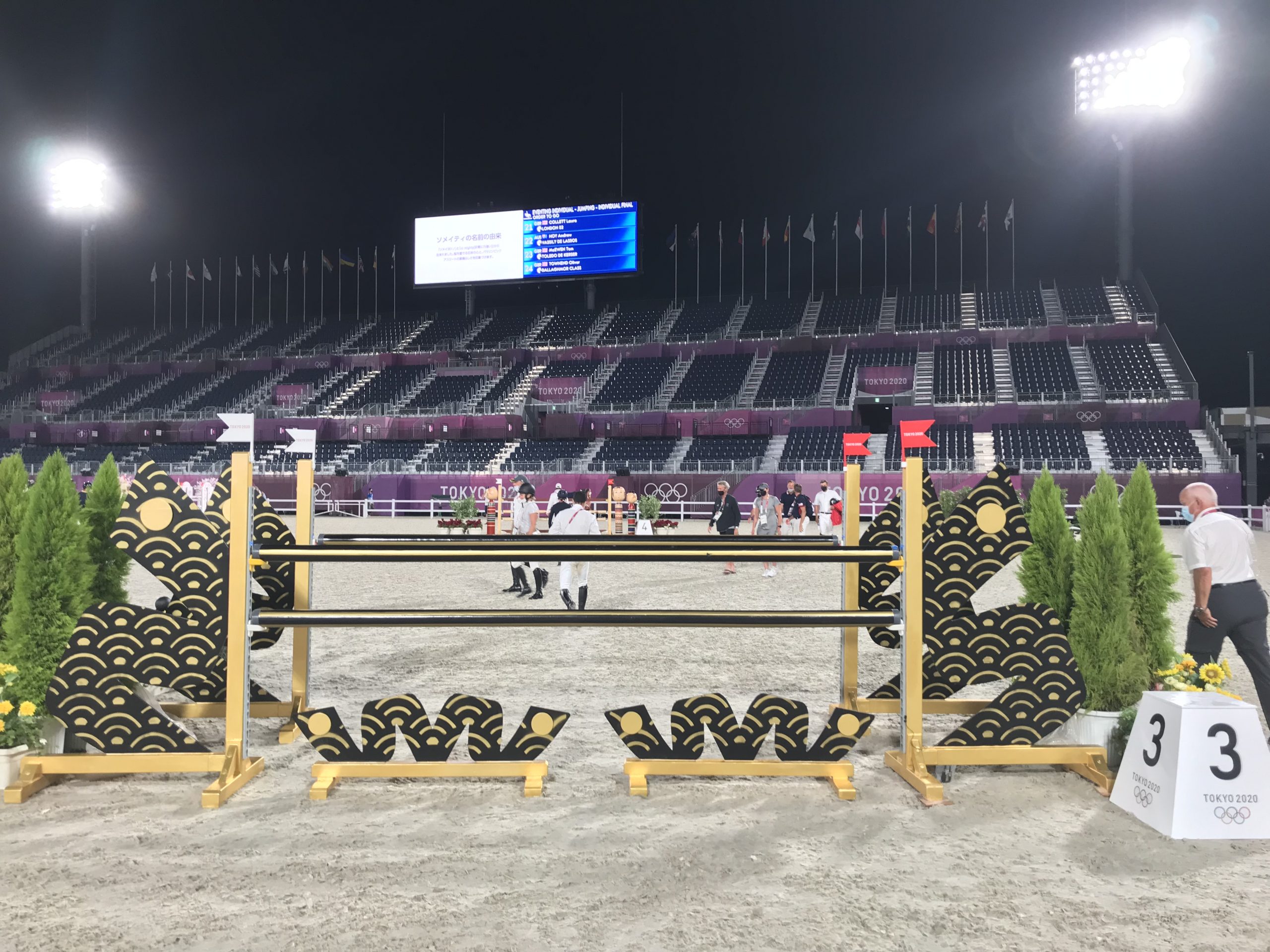
The Seigaiha or wave is a patter of layered concentric circles creating arches, symbolic of waves or water and representing surges of good luck. It can also signify power and resilience.
Fence four – Kokeshi dolls
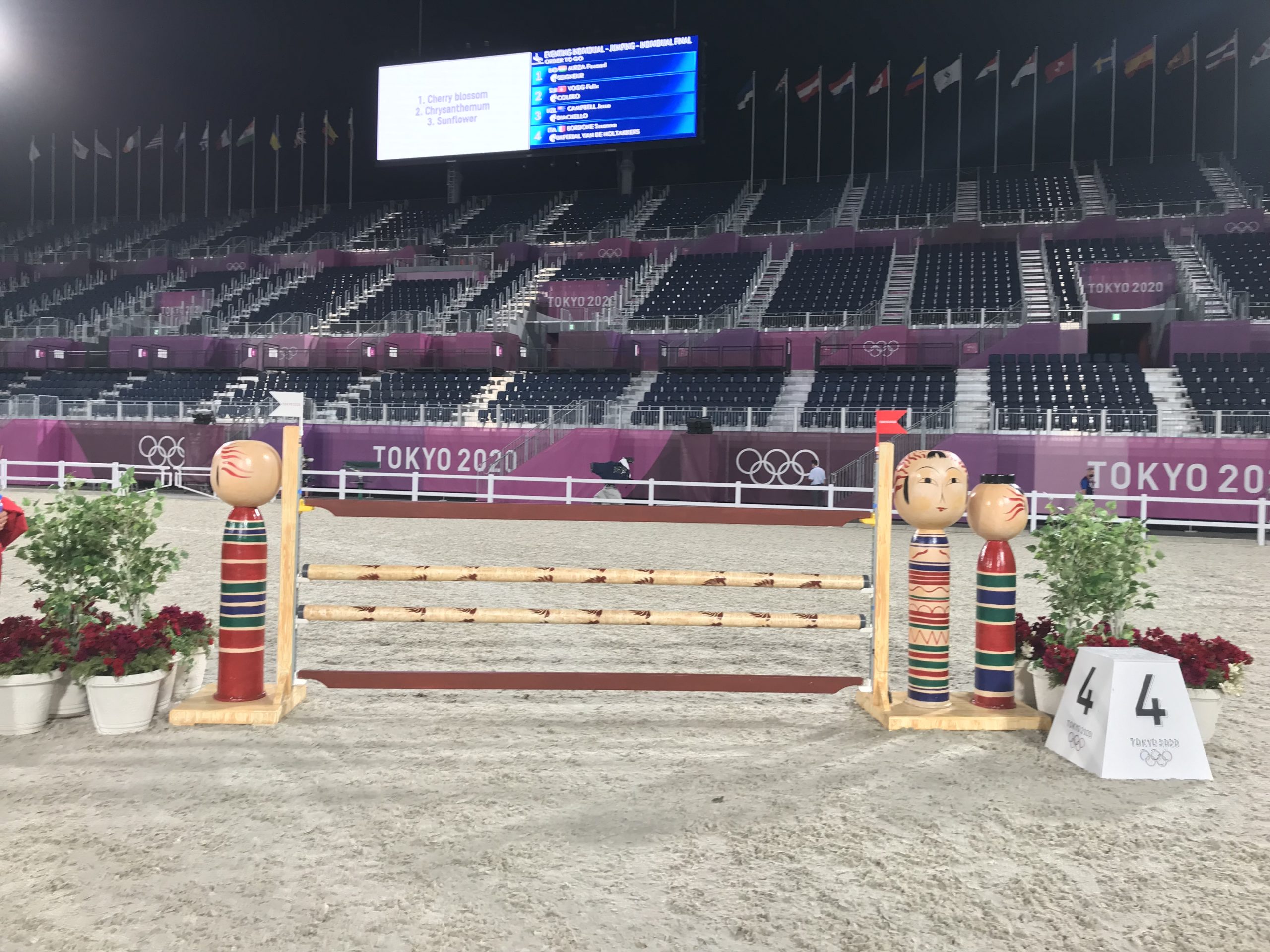
The Kokeshi are the traditional Japanese dolls. Originally crafted in the Tokohu region, in north Japan, a region in the North of Japan, an area most commonly known for its spas and thermal waters. Those considered to be the most traditional are called Naruko, and they are crafted in Miyagi. Its origin dates back to the 17th Century, halfway down through the Edo period. They are handmade and crafted in wood from either the dark cherry or the lighter mizuki tree. The original kokeshi dolls were crafted following a simple design and had an elongated shape mixed with subtle colours. As years have passed, more designs have appeared, always keeping one main characteristic in common, the lack of arms and legs. The body is usually decorated with floral motifs or with the appearance of a kimono. They are considered to be both decorative and good luck amulets. As the wood with which they are carved, the Mizuki, has a high resistance to fire, they are often bought to protect the house from fires. There are two types of kokeshi, traditional and creative or “Sosaku”. The latter are relatively new and can have a high artistic value.
Fence five A – Sakura
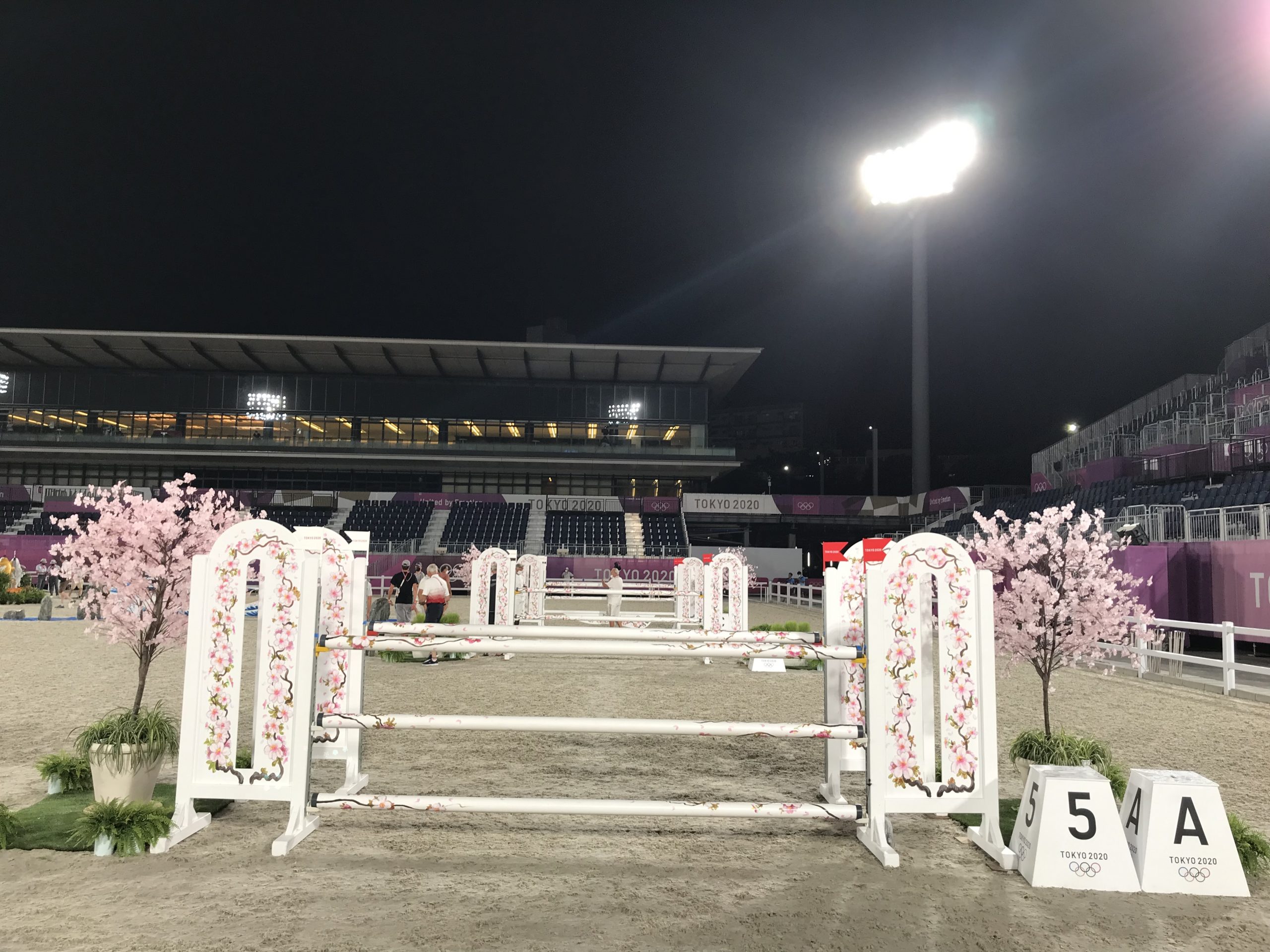
The cherry tree flower is seen as a metaphor of life, which is considered to be beautiful but transient. Cherry trees (Sakura Zensen) start blooming during March and the flowering front (Kaika Zensen) moves from Okinawa towards the north of the country, ending with the flowering of the cherry trees up in Hokkaidō in May. Japan’s Meteorology Office predicts the pattern the flowering front will follow, so that everybody is able to find the best places to see the trees bloom, which is crucial as they only flower for a week.
Fence five B
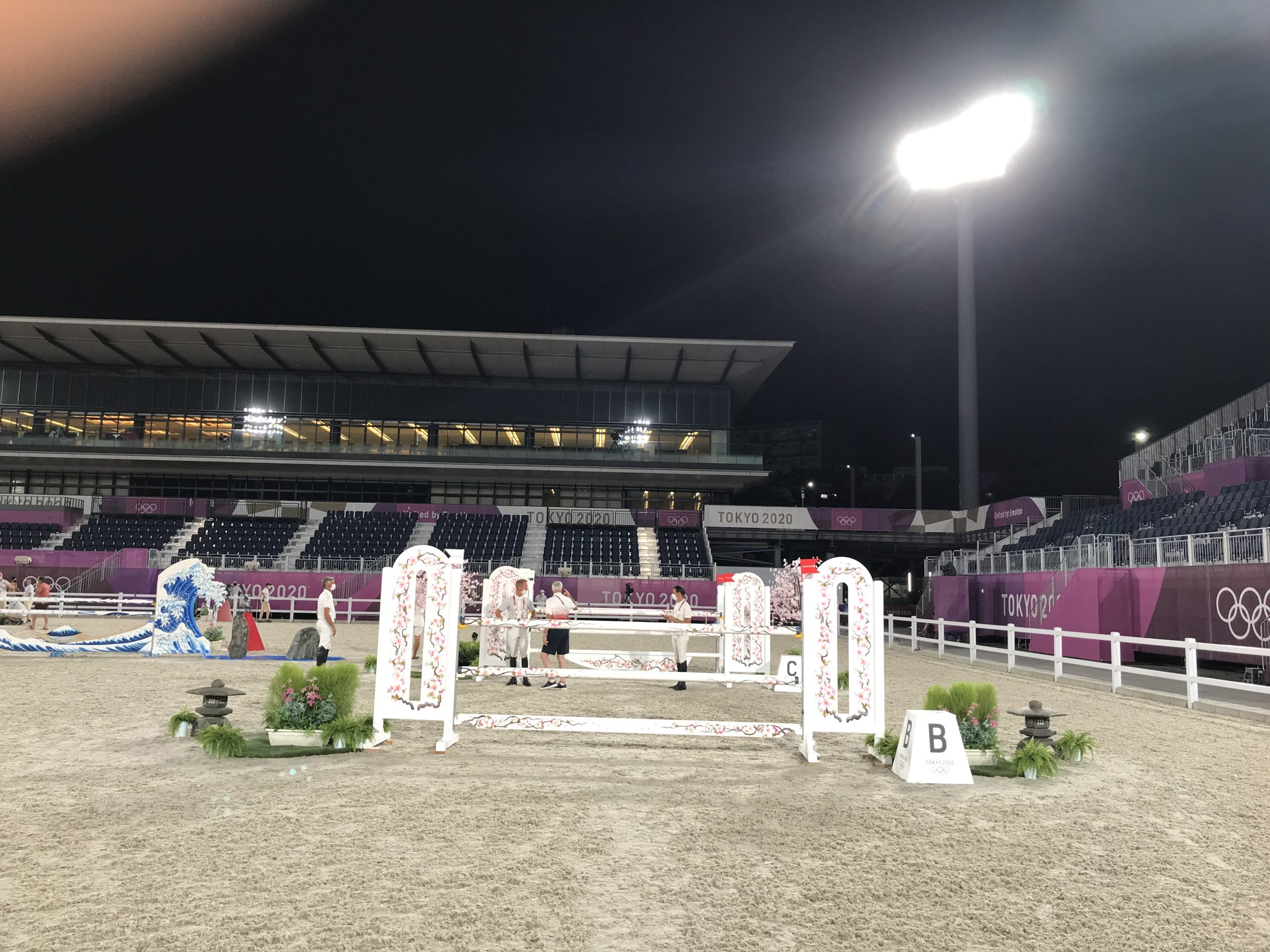
Fence five C
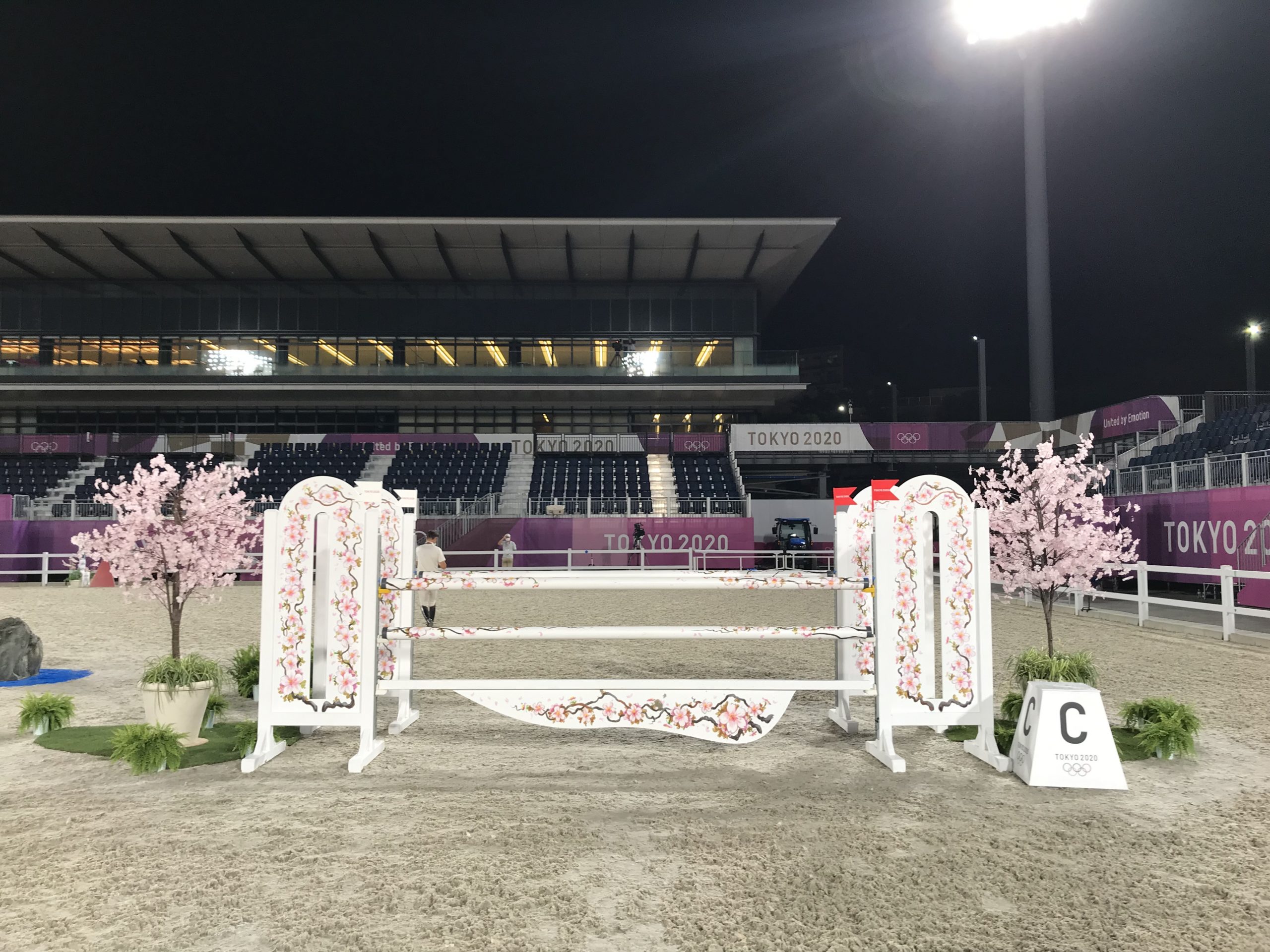
Fence six – FEI 100 years

Fence seven A – Mascot of the Tokyo 2020 Olympics
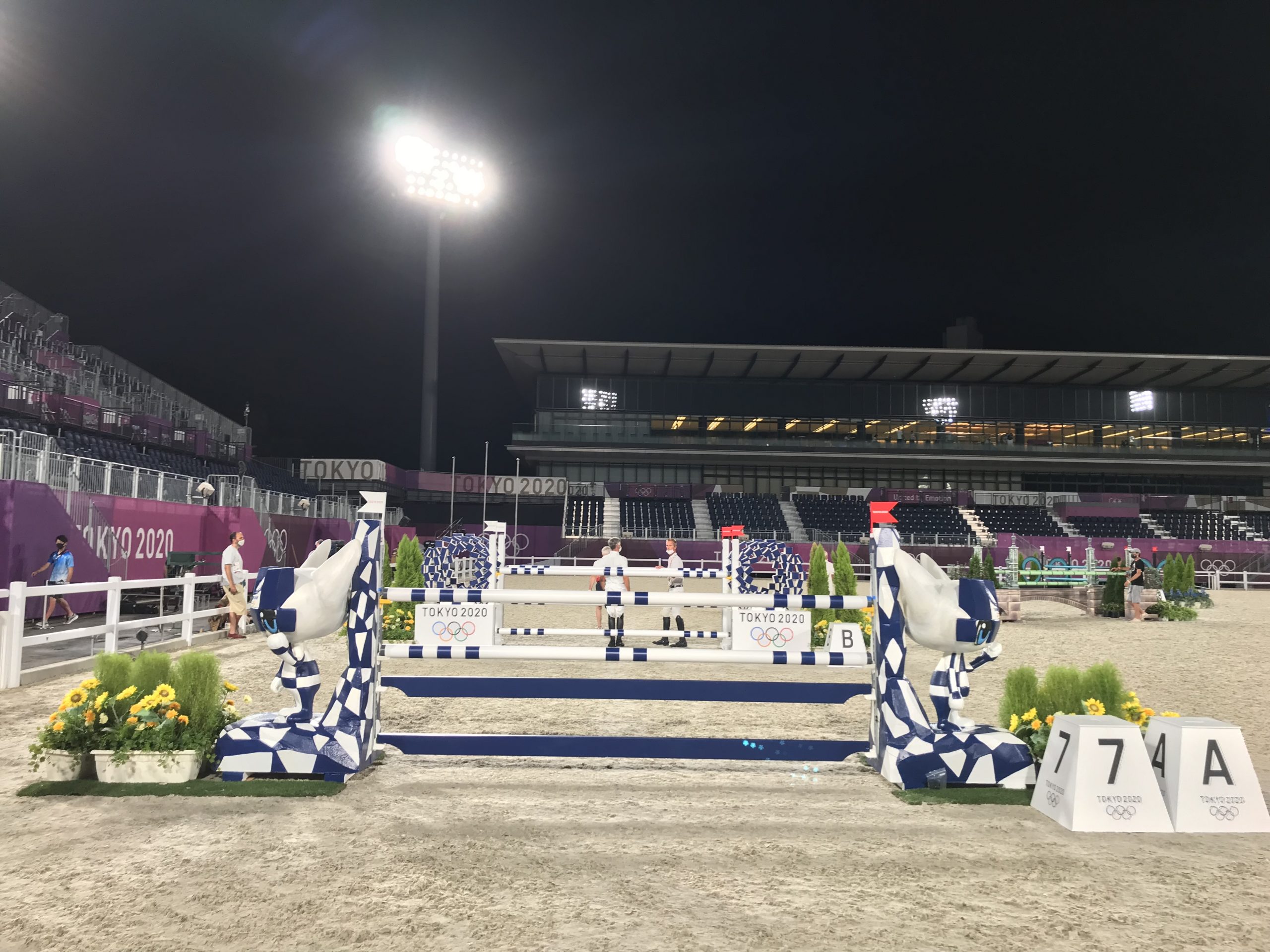
Manga and gamer references are seen, in representation of the Japanese contemporary visual culture and with a character design inspired by the Tokyo 2020 Olympic Games’ Logo. The pair of futuristic characters combine tradition and innovation. The name ofthe Olympics mascot, Miraitowa, fuses the Japanese words for future and eternity. Someity, the Paralympics mascot, is derived from Somei-yoshino, a type of cherry blossom, cherry blossom variety “Someiyoshino” and is a play on words with the English phrase “So mighty”. The two mascot designs were selected by elementary schoolchildren across Japan, Tokyo 2020 organising committee president Yoshiro Mori said at the ceremony: “These mascots are your friends,” you have helped to pick them, and across the country, … five million children helped to pick this. And the name is also something we have picked together. So, this Olympics belongs to everyone.”
Fence seven B
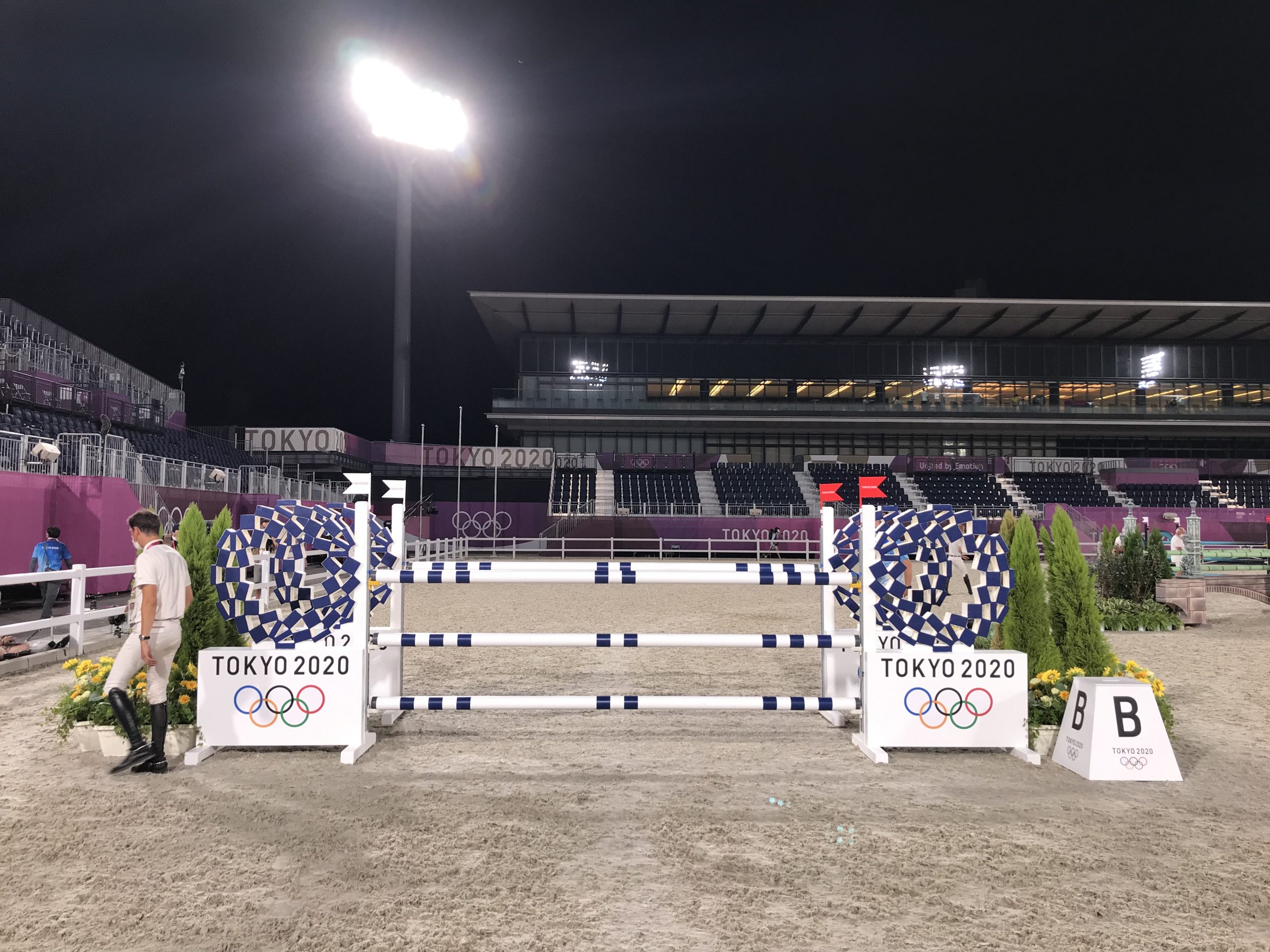
Fence eight – Ensō
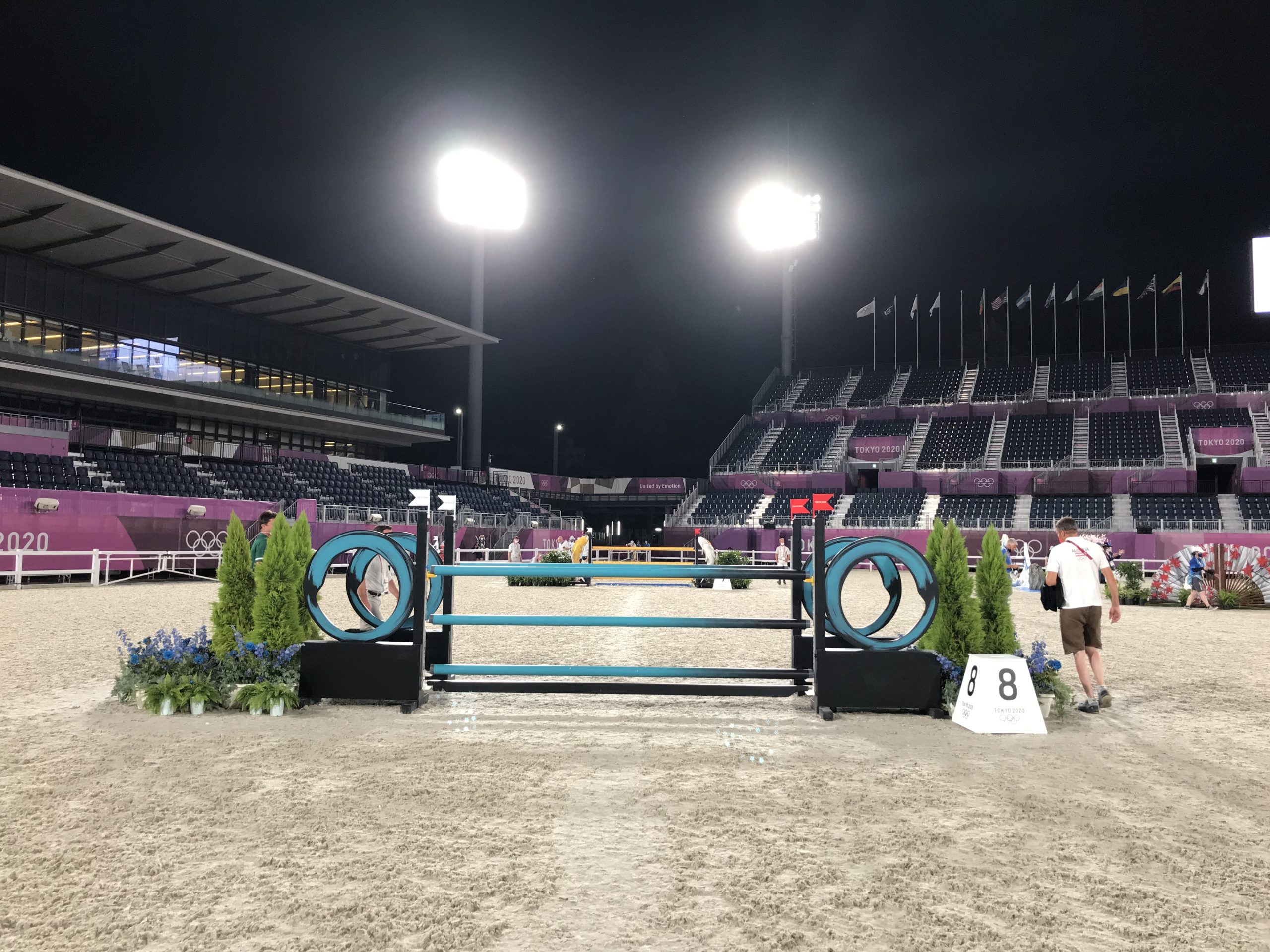
Ensō (circle) is one of the most common subjects of Japanese calligraphy. It has many names, including the circle of enlightenment, the enso circle, the infinity circle and even the lost symbol of Reiki. If you take the meanings of the two Kanji symbols that make up the word, ensō would translate as mutual circle or circle of togetherness. The ensō is a universal symbol of wholeness and completion. As there are so many definitions available, it is up to each individual person to form their own definition of what ensō means to them.
Fence nine – Goldfish
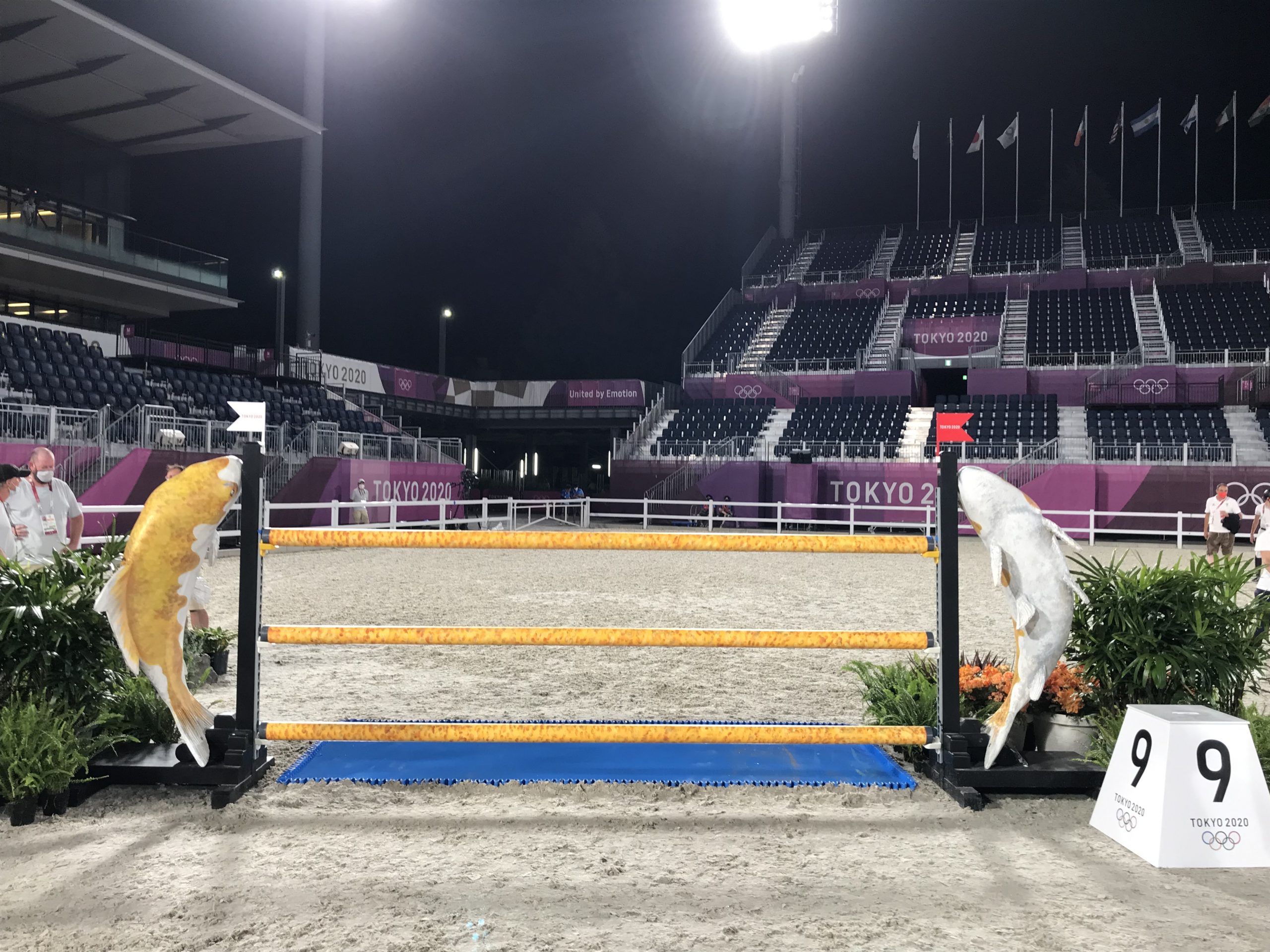
The established theory in Japan is that goldfish (“kingyo” in Japanese) arrived from China around 1502. At that time, goldfish were said to have been kept as a rare and strange pet of aristocrats and the wealthy. Thereafter, kingyo-sukui (goldfish scooping) became popular during the Edo period (1603 – 1868), leading to the sale of goldfish in towns. Goldfish are a popular motif in Japanese art.
Olympic eventing showjumping: individual competition course plan
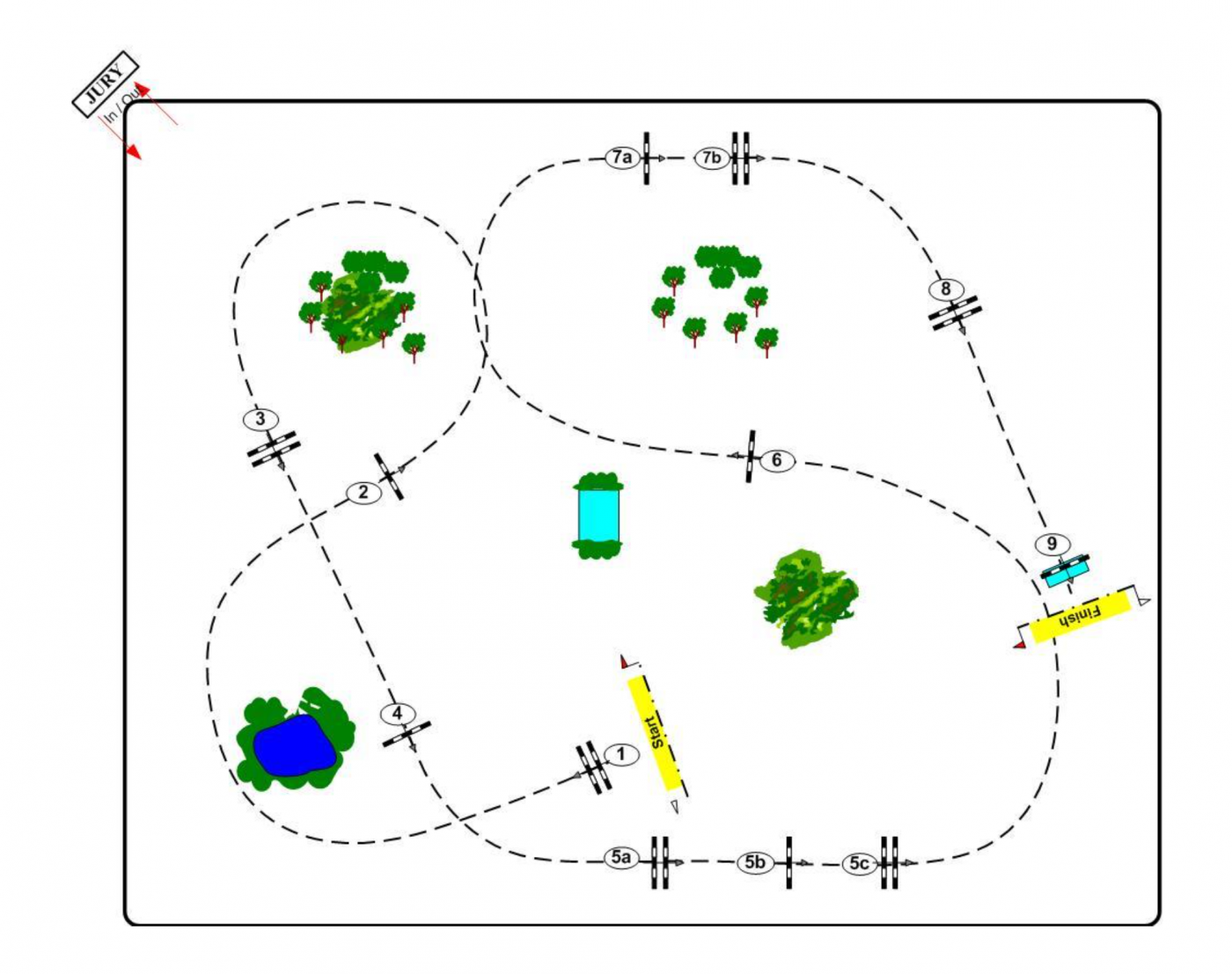
Full running order
- Find the full running order here [PDF download]
You might also be interested in:

Brits in contention for individual glory ahead of final Olympic eventing showjumping round: German rider leads the way

Britain win Olympic eventing team gold at Tokyo 2020

*Updated* What time do Britain’s event riders jump for the Olympic medals today?

Subscribe to Horse & Hound magazine today – and enjoy unlimited website access all year round
Horse & Hound magazine, out every Thursday, is packed with all the latest news and reports, as well as interviews, specials, nostalgia, vet and training advice. Find how you can enjoy the magazine delivered to your door every week, plus options to upgrade your subscription to access our online service that brings you breaking news and reports as well as other benefits.

